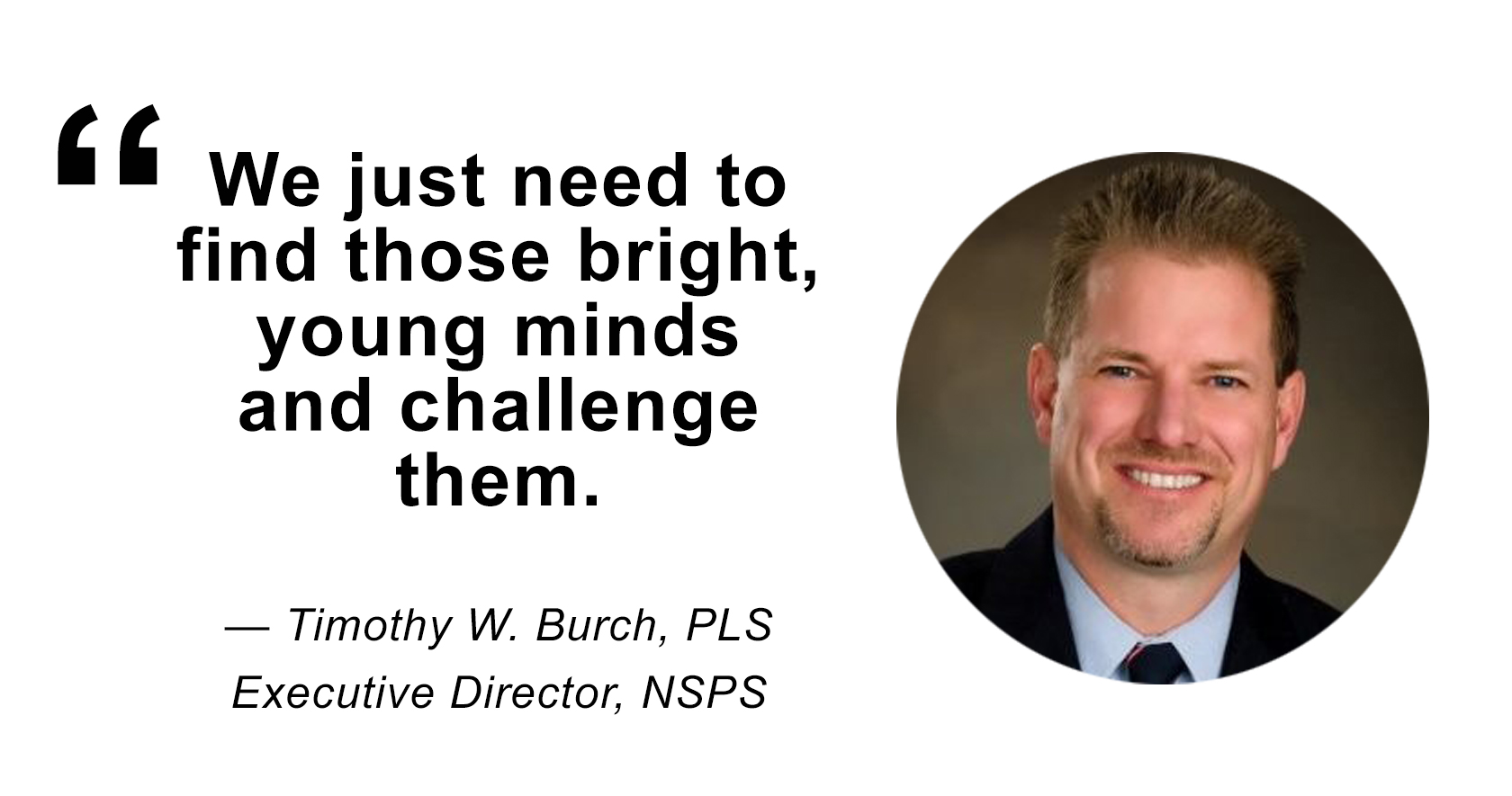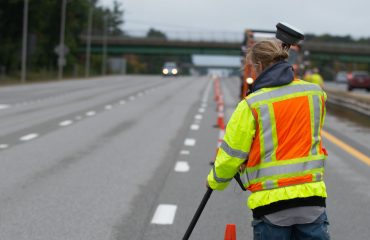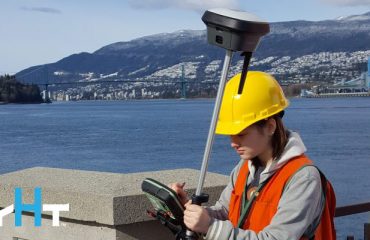NSPS Executive Director Tim Burch discusses the impact of the Get Kids Into Survey program and the increasingly dynamic, high-tech nature of surveying work on the future of the profession.

Note: This story is based on a podcast episode recorded for HxGN Radio, which is available on iTunes, Spotify or SoundCloud.
Listen to the full podcast episode here:
Imagine if someone 25 years ago had started a fun, engaging outreach program into elementary schools that would inspire kids and their parents to see the opportunities in a surveying career. How would that have influenced today’s surveying profession?
We can’t change history, but we can rewrite the future. That’s exactly what Timothy W. Burch, PLS, executive director of the National Society of Professional Surveyors, endeavors to do through his advocacy of the Get Kids Into Survey program.
“In the fall of 2017, [I noticed] this incredible poster that had been published by a young lady out of England by the name of Elaine Ball, who has a background in surveying. … She saw the need to be able to explain to not just students but to parents and to other interested parties what a surveyor truly does.”

Tim was so impressed by the posters and Elaine’s initiative that he reached out to her to find out how to get the surveying community and educational systems in the United States involved. In 2018, the NSPS became the North American distributor for Get Kids Into Survey.
Just five years after its inception, the program has almost 20 posters as well as coloring pages, lesson plans, quizzes and a comic book with six episodes and growing. Surveyors in North America have gone all in. “Most of the state affiliates are constantly ordering posters for distribution at their state conferences,” Tim says. “To date, I think we’re just short of having distributed 70,000 posters nationwide. So, I’d like to think that it’s been a pretty successful initiative.”
But – Is It Working?
The global talent shortage has exacerbated a challenge that has faced surveying for decades: There haven’t been enough young people entering the profession to replace those who are aging out and retiring.
“It’s holding up projects; it’s holding up progress on getting things done, whether it’s public infrastructure, private development—anything that requires engineering, planning, and the initial work that the surveyor does on the ground, construction staking, as-builts, all of that,” Tim says. “When there’s not someone in the field and in the office to create these surveys and plans, it’s not getting done.”
“We’re still going to have labor shortages. But I’m hoping to see that it’s going to be a less of a shortage for us because we’re going to make that connection with the younger generations.”
Five years of reaching out to elementary and middle schools isn’t quite long enough to see a track record of success. And yet, as an awareness initiative, there are clear signs of progress.
“We are getting more and more requests for participation in career fairs,” Tim says. “The posters and this whole program are filtering into the school counselors. … It’s opening the doors for surveyors nationwide to help generate buzz about who we are and what we do and the technology and everything that’s based upon the profession itself. So, it has really been a big help.”
The Role of Technology
For the current generation of professionals who have already chosen other careers, the posters, comic books and lesson plans might have come too late. But here, a different form of outreach is having an impact. With the increasing technology innovation and autonomy in the surveying profession comes an opportunity to attract new talent from unexpected sources.
“I’m a second-generation surveyor,” Tim says. “So the stereotypical surveyor, that’s what I grew up with. That was the man on the side of the road, with a tripod, taking pictures. … Now in the 21st century, it is so much more than that. It is all geospatial. [There’s so] much 3D technology in what we’re doing now. … It’s laser scanning an entire room or building, or site … and basically creating what the industry calls a digital twin of that space. Making that connection, I think, is very important.
“Even that younger generation that maybe has already gone through college, maybe they’ve gotten their degree … we come across the 25- to 35-year-olds that are still looking for an identity,” he adds. “So, it’s not just chasing down the junior high, high school, college kids. It’s also a generation of young adults that are still maybe looking for something, that like a challenge. … It’s not just going out and finding property lines. There’s so much to the measurement, to the data.”
A Dynamic, Exciting Career
All this is small consolation for surveying firm owners and managers who are looking to fill numerous open positions yesterday. But while there is no quick-fix solution to the talent shortage in surveying, a solid future is being built on the groundwork being laid by Elaine Ball, Tim Burch and many others.
Sharing the story that surveying is a dynamic, exciting career with tremendous growth potential is a clear way to accelerate that progress.
“I am optimistic that we’re going to make a difference simply because I know even early in my career what fascinated me about surveying and the technology that kept me in surveying for a long time,” says Tim. “I know there are more like-minded people out there like me, who like a challenge, who like the history, who like being able to work with people, work with data, work with things. There’s a lot more out there. And I think we just need to find those bright, young minds and challenge them.”
To talk to one of our experts and learn more about how technology can optimize your surveying potential, please contact us.



